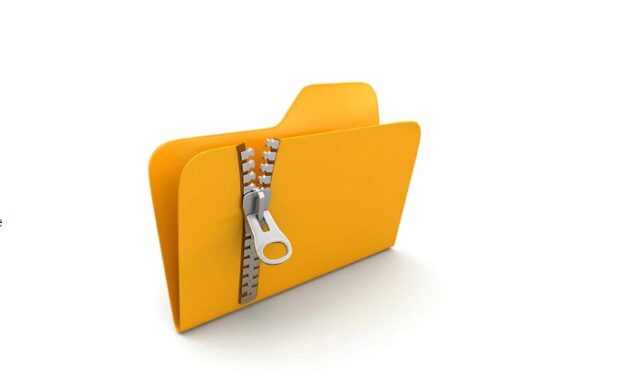
Sometimes we need to send or receive large files, that can’t be attached in the traditional way in your email, and that’s why compressing services exist. Do you remember the old, but still good WinZip or WinRar? They are the firsat apps to let you create a folder, then simply “zip” it, and share it where do you want. Also, today, we can find popular transfer services that use cloud storage to communicate with the recipient.
As you can see on such easy service as FileWhopper, you simply need to choose the file or folder and download the compressed file. It provides you a convenient solution to send large files or folders that have sizes up to 10 TB. Your first 5 GB of data can be transferred for free as well. So, don’t hesitate to check out this website.
There are free tools that come with every operating system, but they can be limited, and that’s why smarter apps exist. Also, one of the main features you need to look for is safety and encryption, and the automatic deletion of the files after you download them. Some services may temporarily keep them on their servers, and then let the file self-destroy.
We are really lucky to have modern operating systems, apps, and software, that provide enough tools to compress the big files and optimize their size, so they can be used on websites, shared, and transferred from one person to another. Most of them work on documents, audio files, images, videos, PDF files, and even though there will be some quality loss, in some cases, it’s not that important to maintain the quality and resolution.
In general, depending on the OS you use, you need to find an app or software that works on it. After that, you can buy the premium version and use all the available features for unlimited time, or just a one-time service, depending on what you need. After you’ve downloaded it on your computer or any other device, you have to:
- Find the “browse” or “upload” button, and then locate the file or folder on your computer.
- Choose it, and wait for the file to be uploaded to the server. It may take up to a few minutes until completed. Bigger files need more time.
- Choose the conversion details and preferences, and create the compressed archive.
- After it’s created, you can simply download it to your computer, or directly send it to the preferred recipient.
- Keep the file forever, so you can decompress the files in case something goes wrong in the future and you lose them.
The good thing is that you can keep them in some cloud storage, or on your email. People often do this when they leave their previous job, but still need some of the files, to keep their work for the future, or for their portfolio.
Transferring the raw files can be very time-consuming, but compressed archives are easy to be uploaded and sent to the recipient. It will also save a lot of storage on your email or cloud, and even on your hard disc, as long as you don’t export the files.
Why is compressing important?

Today’s computers and mobile devices are more optimized to “plan” how they store the files and save on space on your hard disc drive. But, compressing files not only saves space, but also transfer time, and even some costs you may have while working. There are some ways to resize or optimize the size of some particular file, but that leads to quality loss.
Sometimes it’s not that important, but there are some examples when the file should be sent in the actual size, especially when a design or creative solution needs to be approved. When you choose to compress your files, instead of simply attaching them in the mail or message, you are protecting their quality. As you know, all the commercial messaging services optimize the files, especially photos.
That’s why they aren’t the same when sent through Facebook Messenger or Viber. On the other hand, some emails are also pretty limited with their storage and maximum size of the attachment. That’s the moment when we use compressing services, to help us share important files without ruining their quality.
A simple action with great results

Those who work with large amounts of files every day, really know the struggle of attaching and sending different documents and images throughout the whole day. Compressing makes things a lot easier. But, when you look for a good software or application, you need to keep in mind a lot of factors, including the purpose, price, and limitations. We all know and recognize Dropbox, but it can be pretty limited when it comes to files sizes.
When we use Google Drive, the size of the file you can compress depends on the plan you have. One Drive is pretty affordable, but it’s more appropriate for Windows users. We also mentioned File Whooper, which offers paid plans, and you pay for the current file you want to send. Sometimes commercial choices cannot be enough for the actions we want to take. That’s why people always look for something better, that doesn’t limit them that much.
As you see, it’s very simple

You only need to find the service you prefer, depending on your requirements. And after that, it’s all the same – upload the file or folder, compress it, download it, and send it – just like that.
Our final words
Independent users should look for free tools or some of those who charge you per action. Professionals should always have some plan, especially if they need to share plenty of files until the job is done. File compressing saves a little space on your hard drive and/or cloud drive too, but at the same time, a lot of time and nerves.
So, it’s on you to find the right plan you can afford and compress and share your files without losing any pixel of the quality. It’s crucial for your job, and sometimes low-quality files can cost you a lot. And compressing is simple and pretty affordable. Don’t risk it, it’s really worth having some plan in your hand when nothing else works nicely.













